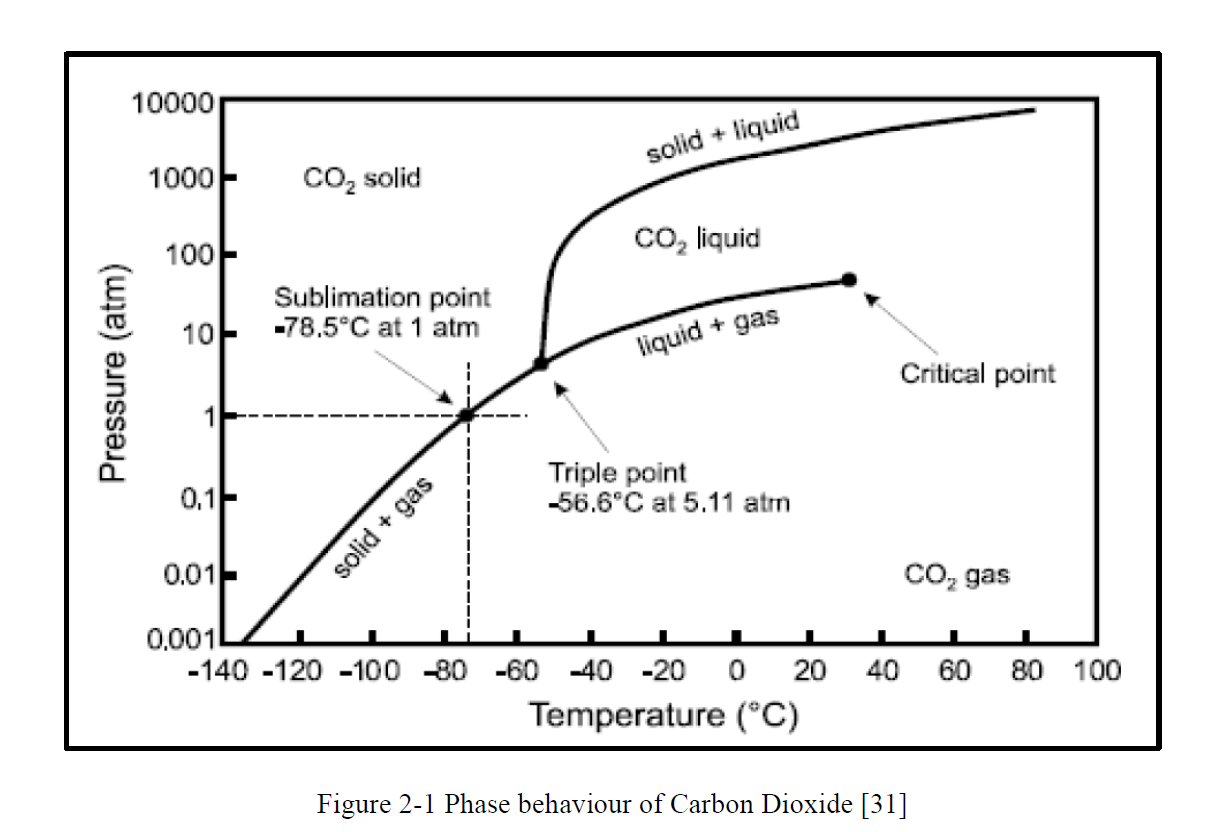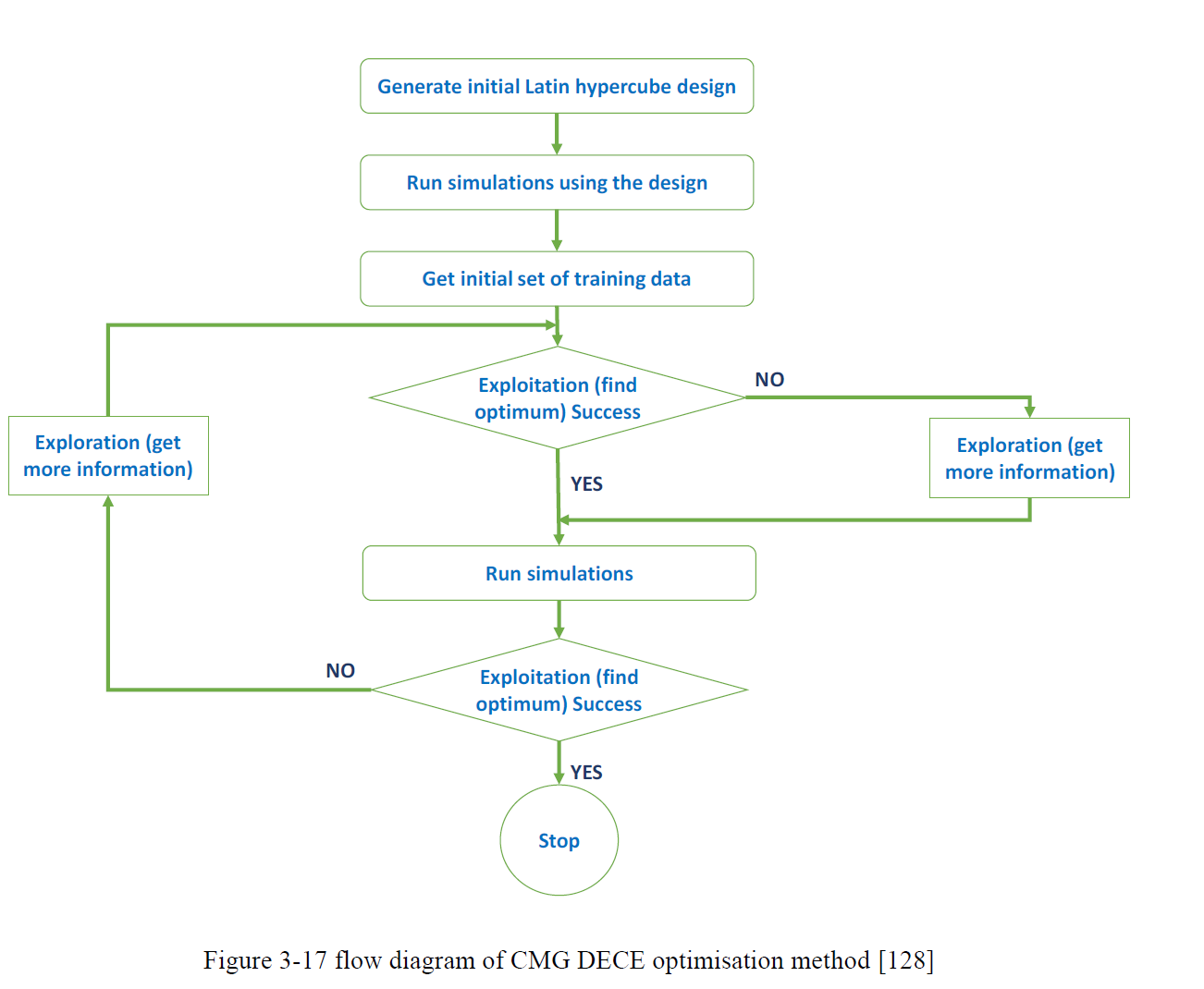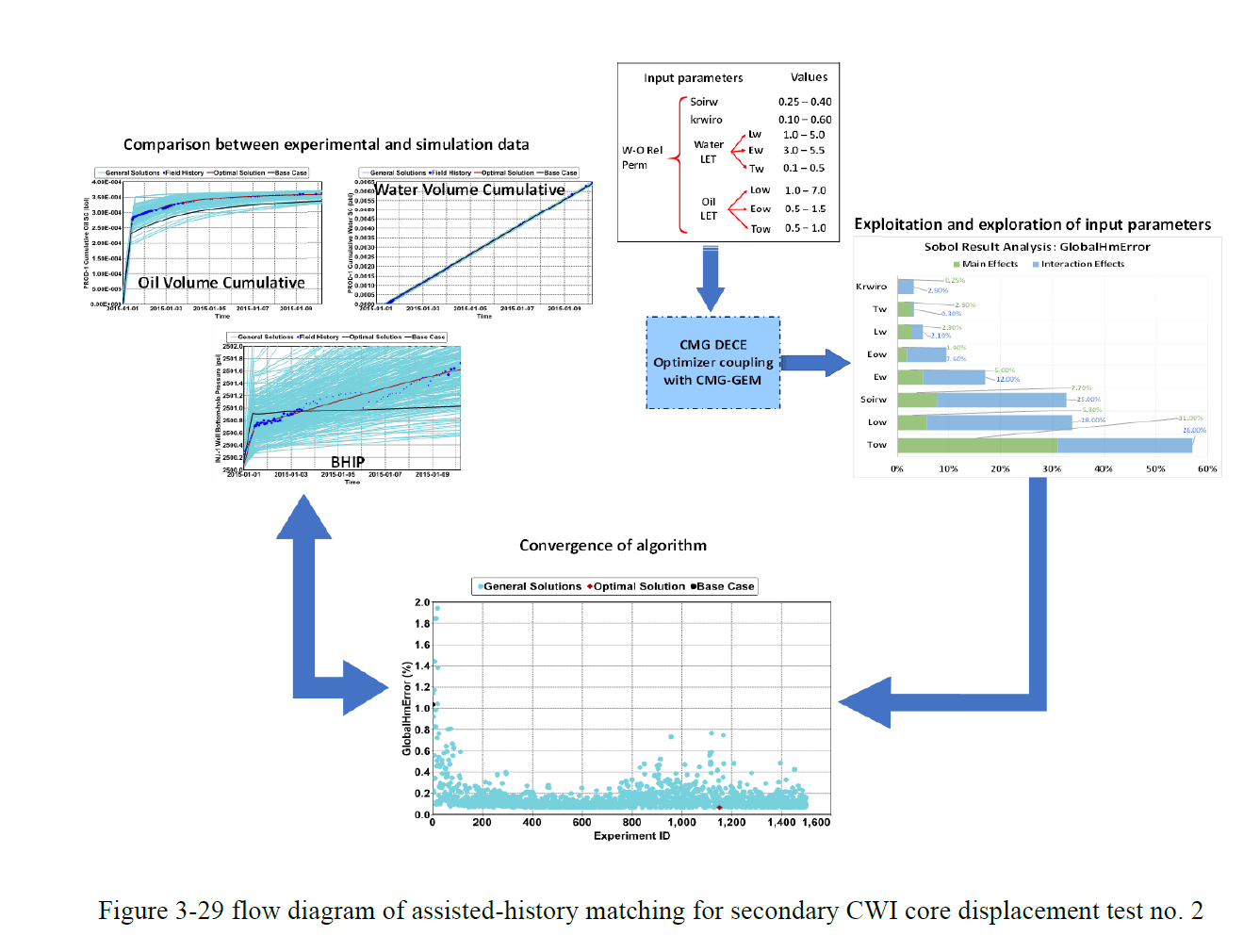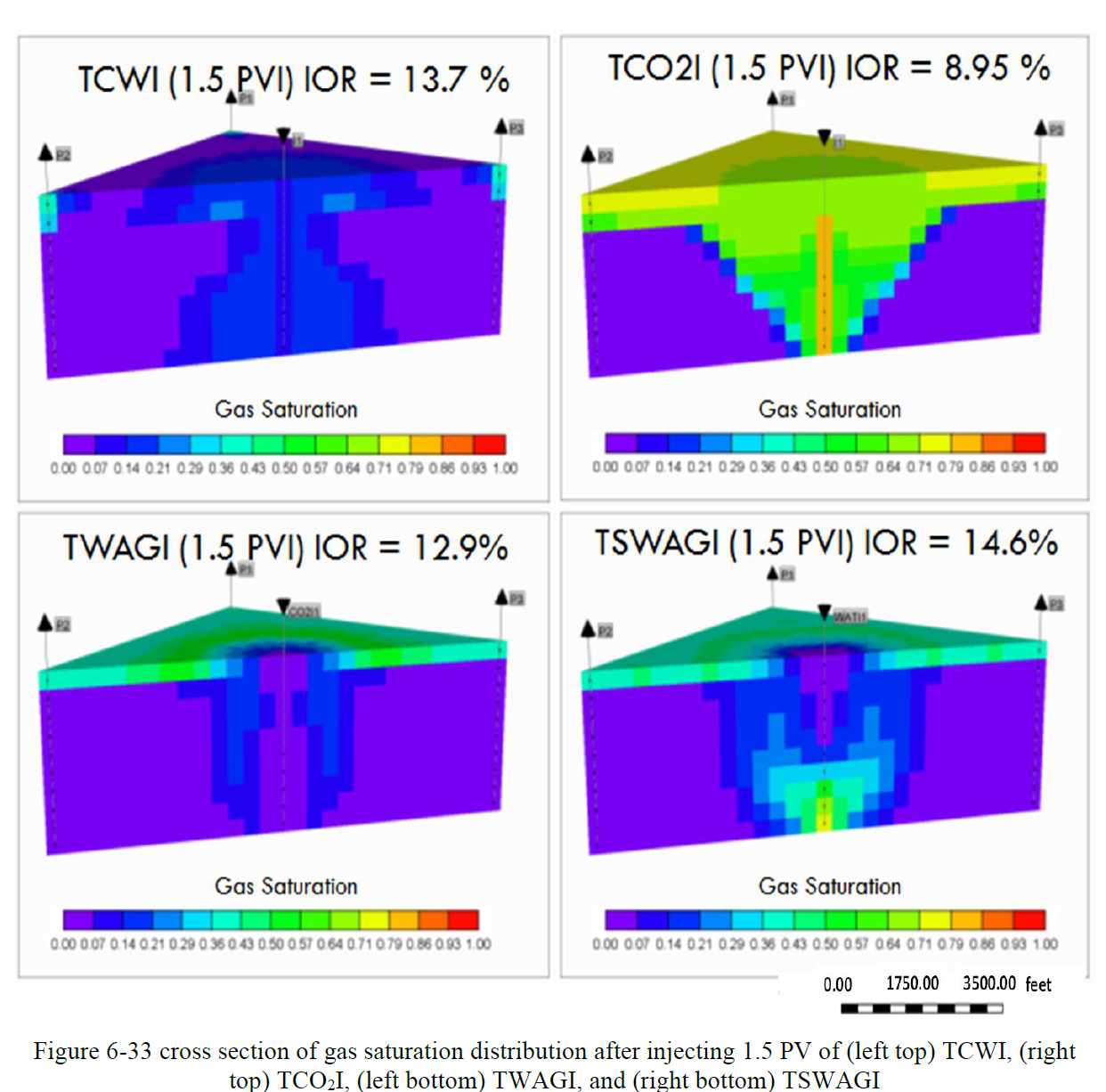Numerical Simulation of Carbonated Water Injection (CWI) Process in Live Oil Systems and Its Influences on Enhanced Oil Recovery
ABSTRACT
This thesis utilised the results of novel direct pore-scale experiments to develop a new and improved methodology for simulating the performance of Carbonated Water Injection (CWI) that is capable of reproducing the multiple physics observed in micromodel and core flood experiments. The method relied on the effectiveness of the transferred CO2 from carbonated water on the compositional phase behaviour of the oil phase, and subsequent formation of an additional phase. Then, based on that, the equation of state was tuned to adopt this behaviour This methodology was applied and tested by history-matching core flood experiments in live oil systems. Through an integrated automatic-history matching algorithm, the proposed method was then employed to examine the ability of compositional reservoir simulators (CMG-GEM) to couple mass transfer and multi-phase flow during CWI.
The results revealed that the binary interaction coefficients between oil components and CO2 would control the extent of the gaseous-phase formation. A unique and unusual negative binary interaction coefficient (BIC) was obtained between CO2 and methane during the history match of tertiary CWI core displacement rather than the formal positive BIC in conventional CO2 injection. Also, a relatively high value for critical gas saturation, as well as much lower krg values, were obtained to history match the coreflood experiments, which was in agreement with direct pore-scale observations of the immobility of the gas phase to reconnect the oil phase.
Next, a CW multiple-contacts equilibrium test was performed to study the compositional phase behaviour of the live oil, with the results being used to tune the equation of state (EOS). The results verified that the formation of a gas phase occurs after the oil became saturated with CO2. Given the necessity for a negative CO2 BIC to methane, different sets of BIC’s were tested. Then, the EOS achieved during the test was used to simulate the CWI core displacement tests that successfully predicted the experimental outcomes, with the negative CO2 BIC to C1, set producing the closest prediction. Therefore, this test verified the proposed method in tuning the EOS through history-matching the formation of gaseous phase saturation in tertiary CWI core displacement test. For the solidity of the simulation method, the applicability of the proposed method was verified in a new set of core displacement experiments. Having history matched the tertiary CWI core displacement experiment, the tuned EOS, and the collected relative permeability data were used to predict the CWI in secondary mode (pre-WF) successfully. Thus, both conventional water and carbonated water would follow a unified flow path in a porous medium in a mixed wet system.
Finally, field-scale application scenarios of CWI for enhancing oil recovery in comparison with other recovery methods [mainly conventional water flooding and immiscible gas (CO2 and methane) injections] was conducted. The outcomes of this study suggested that the injection of CW in secondary mode (pre-WF) is more attractive to produce additional oil. The increase of CO2 content in the carbonated water by reducing the brine salinity or adding CO2 solubility promoters would lead to further improvement in oil recovery as the amount of the formed gaseous phase which responsible in displacing more oil, would increase. Furthermore, the injection of CW uses the least net CO2 about 1 MSCF/STB to recover 10% additional oil and has the highest CO2 retention rate in the reservoir which about 50% of injected CO2 compared to other CO2 recovery methods.




